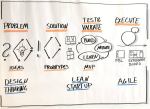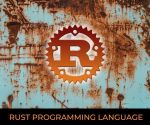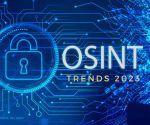“Data Science is the domain of study that deals with vast volumes of data using modern tools and techniques to find unseen patterns, derive meaningful information, and make business decisions. “
Data Science is an essential part of many industries today, given the massive amounts of data that are produced, and is one of the most debated topics in IT circles. Its popularity has grown over the years, and companies have started implementing data science techniques to grow their business and increase customer satisfaction.
What Is Data Science
Data Science is the study of data to extract meaningful insights for business. It is a multidisciplinary approach that combines principles and practices from the fields of Mathematics, Statistics, Artificial Intelligence, and Computer Engineering to analyze large amounts of data. This analysis helps Data Scientists to ask and answer questions like what happened, why it happened, what will happen, and what can be done with the results. These insights can be used to guide decision making and strategic planning.
Data Science is important because it combines tools, methods, and technology to generate meaning from data. Modern organizations are inundated with data; there is a proliferation of devices that can automatically collect and store information. Online systems and payment portals capture more data in the fields of e-commerce, medicine, finance, and every other aspect of human life. We have text, audio, video, and image data available in vast quantities.
Data Science Lifecycle
A Data Science lifecycle is defined as the iterative set of data science steps required to deliver a project or analysis. There are no one-size-fits that define data science projects. Hence you need to determine the one that best fits your business requirements. Each step in the lifecycle should be performed carefully. Any improper execution will affect the following step, ultimately impacting the entire process.
Data Science is key to achieving a perfect data science process here. The main aim is to build a framework and solutions to store data. Since every data science project and the team is unique, every specific data science lifecycle is different.

1. Identifying problems and understanding business : Discovering the answers for basic questions including requirements, priorities and budget of the project.
2. Data Collection : Collecting data from relevant sources either in structured or unstructured form.
3. Data processing: Processing and fine-tuning the raw data, critical for the goodness of the overall project.
4. Data analysis: Capturing ideas about solutions and factors that influence the data life cycle.
5. Data modelling: Preparing the appropriate model to achieve desired performance.
6. Model deployment: Executing the analysed model in desired format and channel.
Data Science Techniques
Data Science professionals use computing systems to follow the data science process. The top techniques used by data scientists are:
Classification
Classification is the sorting of data into specific groups or categories. Computers are trained to identify and sort data. Known data sets are used to build decision algorithms in a computer that quickly processes and categorizes the data. For example:·
- Sort products as popular or not popular.
- Sort insurance applications as high risk or low risk.
- Sort social media comments into positive, negative, or neutral.
Regression
Data Science professionals use computing systems to follow the Data Science process.
Regression is the method of finding a relationship between two seemingly unrelated data points. The connection is usually modeled around a mathematical formula and represented as a graph or curves. When the value of one data point is known, regression is used to predict the other data point. For example:·
- The rate of spread of air-borne diseases.
- The relationship between customer satisfaction and the number of employees.
- The relationship between the number of fire stations and the number of injuries due to fire in a particular location.
Clustering
Clustering is the method of grouping closely related data together to look for patterns and anomalies. Clustering is different from sorting because the data cannot be accurately classified into fixed categories. Hence the data is grouped into most likely relationships. New patterns and relationships can be discovered with clustering. For example: ·
- Group customers with similar purchase behavior for improved customer service.·
- Group network traffic to identify daily usage patterns and identify a network attack faster.
- Cluster articles into multiple different news categories and use this information to find fake news content.
The basic principle behind Data Science techniques:
While the details vary, the underlying principles behind these techniques are:
- Teach a machine how to sort data based on a known data set. For example, sample keywords are given to the computer with their sort value. “Happy” is positive, while “Hate” is negative.
- Give unknown data to the machine and allow the device to sort the dataset independently.
- Allow for result inaccuracies and handle the probability factor of the result.
Benefits Of Data Science
- Data Science may detect patterns in seemingly unstructured or unconnected data, allowing conclusions and predictions to be made.
- Tech businesses that acquire user data can utilise strategies to transform that data into valuable or profitable information.
- Data Science has also made inroads into the transportation industry, such as with driverless cars. It is simple to lower the number of accidents with the use of driverless cars. For example, with driverless cars, training data is supplied to the algorithm, and the data is examined using data Science approaches, such as the speed limit on the highway, busy streets, etc.
- Data Science applications provide a better level of therapeutic customisation through genetics and genomics research.90
Data Science Technologies
Data Science practitioners work with complex technologies such as:
- Artificial Intelligence: Machine Learning models and related software are used for predictive and prescriptive analysis.
- Cloud Computing: Cloud technologies have given data scientists the flexibility and processing power required for advanced data analytics.
- Internet of Things: IoT refers to various devices that can automatically connect to the internet. These devices collect data for data science initiatives. They generate massive data which can be used for data mining and data extraction.
- Quantum Computing: Quantum computers can perform complex calculations at high speed. Skilled data scientists use them for building complex quantitative algorithms.
Data Science Use Cases
Data science has found its applications in almost every industry.
1. Healthcare
Healthcare companies are using data science to build sophisticated medical instruments to detect and cure diseases.
2. Gaming
Video and computer games are now being created with the help of data science and that has taken the gaming experience to the next level.
3. Image Recognition
Identifying patterns in images and detecting objects in an image is one of the most popular data science applications.
4. Recommendation Systems
Netflix and Amazon give movie and product recommendations based on what you like to watch, purchase, or browse on their platforms.
5. Logistics
Data Science is used by logistics companies to optimize routes to ensure faster delivery of products and increase operational efficiency.
6. Internet Search
When we think of search, we immediately think of Google. Right? However, there are other search engines, such as Yahoo, Duckduckgo, Bing, AOL, Ask, and others, that employ data science algorithms to offer the best results for our searched query in a matter of seconds. Given that Google handles more than 20 petabytes of data per day. Google would not be the ‘Google’ we know today if Data Science did not exist.
8. Speech Recognition
Speech recognition is dominated by Data Science techniques. We may see the excellent work of these algorithms in our daily lives. Have you ever needed the help of a virtual speech assistant like Google Assistant, Alexa, or Siri? Well, its voice recognition technology is operating behind the scenes, attempting to interpret and evaluate your words and delivering useful results from your use. Image recognition may also be seen on social media platforms such as Facebook, Instagram, and Twitter. When you submit a picture of yourself with someone on your list, these applications will recognise them and tag them.
9. Targeted Advertising
If you thought Search was the most essential Data Science use, consider this: the whole digital marketing spectrum. From display banners on various websites to digital billboards at airports, data science algorithms are utilised to identify almost anything. This is why digital advertisements have a far higher CTR (Call-Through Rate) than traditional marketing. They can be customised based on a user’s prior behaviour. That is why you may see adverts for Data Science Training Programs while another person sees an advertisement for clothes in the same region at the same time.
10. Airline Route Planning
As a result of Data Science, it is easier to predict flight delays for the airline industry, which is helping it grow. It also helps to determine whether to land immediately at the destination or to make a stop in between, such as a flight from Delhi to the United States of America or to stop in between and then arrive at the destination.
Final Thoughts
Artificial Intelligence and Machine Learning innovations have made data processing faster and more efficient. Industry demand has created an ecosystem of courses, degrees, and job positions within the field of data science. Because of the cross-functional skillset and expertise required, Data Science shows strong projected growth over the coming decades.
🅐🅚🅖
Interested in Management, Design or Technology Consulting, contact anil.kg.26@gmail.com
Get updates and news on our social channels!
LATEST POSTS
- A Tale Of Two Frameworks: Spring Boot vs. Django
 “Spring Boot’s convention over configuration approach simplifies development, allowing developers… Read more: A Tale Of Two Frameworks: Spring Boot vs. Django
“Spring Boot’s convention over configuration approach simplifies development, allowing developers… Read more: A Tale Of Two Frameworks: Spring Boot vs. Django - Unleashing The Power Of Django
 “Django, akin to a Swiss Army knife, provides a comprehensive… Read more: Unleashing The Power Of Django
“Django, akin to a Swiss Army knife, provides a comprehensive… Read more: Unleashing The Power Of Django - Potential of Progressive Web Apps (PWAs)
 “PWAs are not just about technology; they are about creating… Read more: Potential of Progressive Web Apps (PWAs)
“PWAs are not just about technology; they are about creating… Read more: Potential of Progressive Web Apps (PWAs) - Unleashing The Power Of Spring Framework
 “Spring Framework simplifies enterprise Java development, but it does so… Read more: Unleashing The Power Of Spring Framework
“Spring Framework simplifies enterprise Java development, but it does so… Read more: Unleashing The Power Of Spring Framework - Key Trends Of OSINT In 2024
 “The future of OSINT lies in our ability to adapt… Read more: Key Trends Of OSINT In 2024
“The future of OSINT lies in our ability to adapt… Read more: Key Trends Of OSINT In 2024 - Can Google’s Carbon Language Replace C++?
 “While Carbon may excel in performance-critical domains, it cannot replace… Read more: Can Google’s Carbon Language Replace C++?
“While Carbon may excel in performance-critical domains, it cannot replace… Read more: Can Google’s Carbon Language Replace C++? - Integration of Design Thinking, Lean, and Agile
 “Innovation thrives when Design Thinking, Lean, and Agile converge, creating… Read more: Integration of Design Thinking, Lean, and Agile
“Innovation thrives when Design Thinking, Lean, and Agile converge, creating… Read more: Integration of Design Thinking, Lean, and Agile - Benefits Of Infrastructure as Code (IaC)
 “Infrastructure as Code is the single most important thing you… Read more: Benefits Of Infrastructure as Code (IaC)
“Infrastructure as Code is the single most important thing you… Read more: Benefits Of Infrastructure as Code (IaC) - Power Of Internet of Everything (IoE)
 “The true power of the Intebrnet of Everything lies not… Read more: Power Of Internet of Everything (IoE)
“The true power of the Intebrnet of Everything lies not… Read more: Power Of Internet of Everything (IoE) - How Is The Enterprise IoT Evolving?
 “IoT is not just about connecting things; it’s about connecting… Read more: How Is The Enterprise IoT Evolving?
“IoT is not just about connecting things; it’s about connecting… Read more: How Is The Enterprise IoT Evolving? - IT Pricing Strategy And Models
 “The art of pricing lies in finding the perfect balance… Read more: IT Pricing Strategy And Models
“The art of pricing lies in finding the perfect balance… Read more: IT Pricing Strategy And Models - What Is SYCL (“sickle”)?
 “SYCL provides a powerful and intuitive programming model that simplifies… Read more: What Is SYCL (“sickle”)?
“SYCL provides a powerful and intuitive programming model that simplifies… Read more: What Is SYCL (“sickle”)? - What Is A Data Lakehouse?
 “With a data lakehouse, organizations can break down data silos,… Read more: What Is A Data Lakehouse?
“With a data lakehouse, organizations can break down data silos,… Read more: What Is A Data Lakehouse? - 5G – The Future Of The Internet
 “5G is the next big step in the evolution of… Read more: 5G – The Future Of The Internet
“5G is the next big step in the evolution of… Read more: 5G – The Future Of The Internet - Ransomware Groups Are Switching To Rust
 “Rust is to Ransomware what a lockpick is to a… Read more: Ransomware Groups Are Switching To Rust
“Rust is to Ransomware what a lockpick is to a… Read more: Ransomware Groups Are Switching To Rust - Streaming Data Pipelines
 “A streaming data pipeline is like a river: it flows… Read more: Streaming Data Pipelines
“A streaming data pipeline is like a river: it flows… Read more: Streaming Data Pipelines - Why Rust Is Best?
 “Rust is a systems programming language that runs blazingly fast,… Read more: Why Rust Is Best?
“Rust is a systems programming language that runs blazingly fast,… Read more: Why Rust Is Best? - Database Sharding Explained
 “Database sharding is like breaking a large puzzle into smaller,… Read more: Database Sharding Explained
“Database sharding is like breaking a large puzzle into smaller,… Read more: Database Sharding Explained - Ambient Computing Will Be The Future Tech
 “Ambient computing creates a seamless technology-rich environment, but challenges in… Read more: Ambient Computing Will Be The Future Tech
“Ambient computing creates a seamless technology-rich environment, but challenges in… Read more: Ambient Computing Will Be The Future Tech - Key Trends Of OSINT In 2023
 “OSINT is not just a technique, it’s a mindset. It’s… Read more: Key Trends Of OSINT In 2023
“OSINT is not just a technique, it’s a mindset. It’s… Read more: Key Trends Of OSINT In 2023


[…] it can be confusing to differentiate between Data Analytics and Data Science. Despite the two being interconnected, they provide different results and pursue different […]
LikeLike